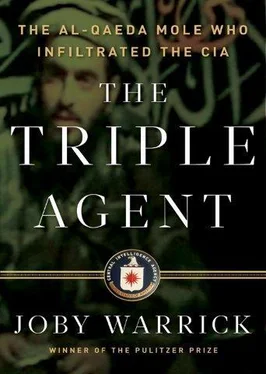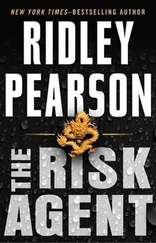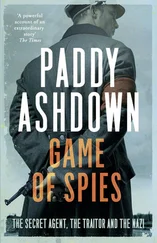“The most important failure was one of imagination,” the panel said in its 2004 report.
The suicide attack on Khost, while hardly comparable in scale, shared in at least this one root cause. Before December 30, 2009, no one at the CIA had dreamed that an informant would set up a meeting with his handlers just so he could kill them along with himself. Over the course of the CIA’s first sixty-two years, a multitude of double agents, informants, and spies had lied, defrauded, betrayed, stolen money, or skipped town. Not one had ever blown himself up.
Balawi, through the power of his manufactured evidence, put himself on a path that would inevitably end with a confrontation. Foresight might have limited the number of deaths, yet even the most powerful and prescient observer could not have constrained the two singular forces that collided in Khost in the fading light of December 30, 2009.
One was the mind of Humam al-Balawi, a man who scudded and wove between towering waves, unsure of his destination and never exactly what he seemed.
The other was the eagerness of war-weary spies who saw a mirage and desperately wanted it to be real.
Arlington’s marble headstones had lain beneath a thick blanket of snow when Leon Panetta visited in January to preside over the burials of Jennifer Matthews and Darren LaBonte. Now the cemetery was ablaze with color, from crimson tulips and pink dogwood blossoms to the emerald green of new grass, all bathed in brilliant sunshine. More than three hundred people, including a large contingent of Elizabeth Hanson’s CIA friends, trooped quietly through the rows of headstones to stand with her parents and brother at her graveside. Two of them walked with crutches because of leg wounds suffered in the bombing at Khost.
The crowd gathered beneath a giant oak tree that shaded the spot where Hanson’s ashes, in a mahogany box bearing the CIA seal, was to be buried. An honor guard folded an American flag, which was presented to Hanson’s mother. “She guarded the flag, and now the flag guards her forever,” the military chaplain said.
As the eulogies were spoken, Panetta’s chief of staff, Jeremy Bash, stood near the back of the crowd with an eye on his muted cell phone. The wait was nearly over. It was time for a decision, and this one would be harder than most.
Near the Pakistani town of Miranshah, two of the agency’s drones had been monitoring the same mud-brick building for hours, watching for any sign of movement. The man inside was believed to be Sheikh Saeed al-Masri, but the truth was, the agency was less than sure. Earlier in the spring the CIA’s targeters had come close, but the sheikh slipped away before the Predators were in place. This time a tip led the agency to a cluster of buildings a few miles northwest of Miranshah. The structures were watched for days as counterterrorism officers narrowed down where precisely al-Masri was staying and who else shared the space with him.
The CIA did know that there were noncombatants in the compound, because at least two women and several children had been seen entering. The risks were grave this time, but the potential prize was huge: al-Qaeda’s No. 3 commander, on this day of all days.
If it was really him.
The service ended with no further word from Pakistan. Panetta paid his respects to Hanson’s family, and the CIA director’s black car pulled out of the cemetery and headed north, away from Washington and toward Baltimore. Panetta had an appointment at the National Security Agency, the government’s electronic eavesdropping service, and the hunt for al-Masri would follow him there.
Panetta had scarcely arrived at the NSA building when he was summoned to one of the agency’s secure phones. The CIA’s counterterrorism chief had fresh news, not all of it good.
“We think we’ve got this guy, but there may be some collateral damage,” the chief was saying, referring to the women and children believed to be in the building the agency’s drones were watching.
Panetta’s heart sank. Nothing was coming easy with this one. He called Emanuel’s office again. The White House was nervous too.
“It’s your decision,” Panetta was told.
The CIA director sat quietly for a moment, the day’s events replaying in his brain. He picked up the phone again and called his counterterrorism director.
“Look, I need to know how certain you feel about the target,” he began. “This is really important.”
“Eighty percent,” the counterterrorism chief was saying. “Maybe ninety percent, in terms of knowing we have the right target.”
The numbers weren’t the ones Panetta was hoping for. But this might well be the best chance the agency would ever get.
“I don’t see how I can’t do it,” he finally said. “Go ahead.”
Panetta hung up the phone and tried to focus on his meeting. Later in the afternoon he received reports about the missiles’ deadly flight and the utter destruction of the targeted building. He learned of the recovery of bodies, and he was given the news—painful to contemplate for him—that two women and a child were among the dead. As for the fate of al-Masri himself, there was only silence out of Pakistan. Nothing more was learned during the rest of the day, or the following morning, or the day after that.
Then, on Memorial Day, the agency’s surveillance network picked up the first snippet of conversation hinting of a momentous change in al-Qaeda’s highest ranks. The terrorist group had lost one of its leaders, and the formal announcement would be posted soon on one of the usual jihadist Web sites. Al-Masri, the operational commander, had been targeted by a CIA missile at a safe house near Miranshah on May 21 and was now dead.
Panetta immediately picked up the phone and called his friend Emanuel at the White House.
“Rahm,” he said, “we just took out Number Three.”
The whereabouts of No. 1, bin Laden, and No. 2, Zawahiri, remained unknown.
On May 1, 2011, the same fierce desire to avenge September 11 that led to a terrible miscalculation at Khost produced a long-sought victory. Less than one year after al-Masri was confirmed dead, the hunt for bin Laden also ended.
Bin Laden, the CIA discovered, had been hiding not in the dusty borderlands between Afghanistan and Pakistan, but in a green valley town in Pakistan called Abbottabad, noted for its pleasant weather, shopping malls, and top-rated golf course. There, a half day’s drive from the Afghan border, his followers had constructed a palatial compound for the al-Qaeda chief, far from the buzzing CIA drones and shielded from neighbors by twelve-foot walls topped with razor wire.
Bin Laden set up housekeeping within the compound in 2005, joined by three of his five wives and at least two of his eighteen children. The house had no telephone or Internet, but it had a shaded garden for morning strolls and a balcony with its own seven-foot-tall privacy barrier so the terrorist mastermind could sun himself in seclusion. His third-floor bedroom window afforded a view of cabbage fields, grazing cattle, and craggy hills, while the satellite TV served up a daily diet of Arab-language soap operas and news shows. In March 2011, in his sixth year inside the compound, he quietly marked his fifty-fourth birthday, a middle-aged man with graying locks and a thickening waist, his once-towering global ambitions now confined to a space smaller than a soccer field.
Unknown to him, even this small sanctuary was soon to disappear.
Thousands of miles away in another green suburb, tiny scraps of data, collected and studied by scores of different people over nearly a decade, had been assembled like a giant puzzle to reveal a possible answer to one of the most vexing mysteries of the age. For the first time since the attacks of September 11, 2001, the CIA believed it knew where to find bin Laden.
Читать дальше












